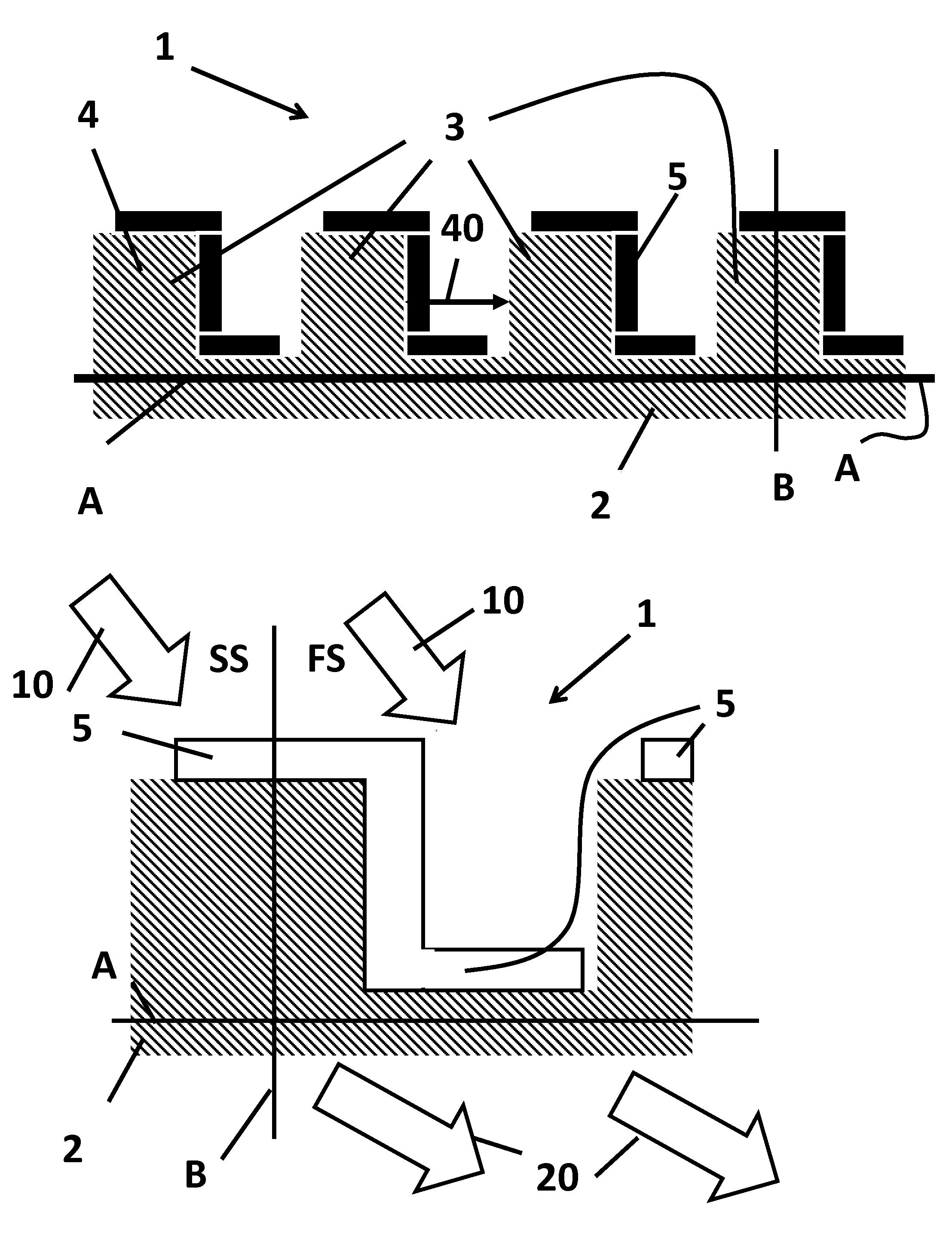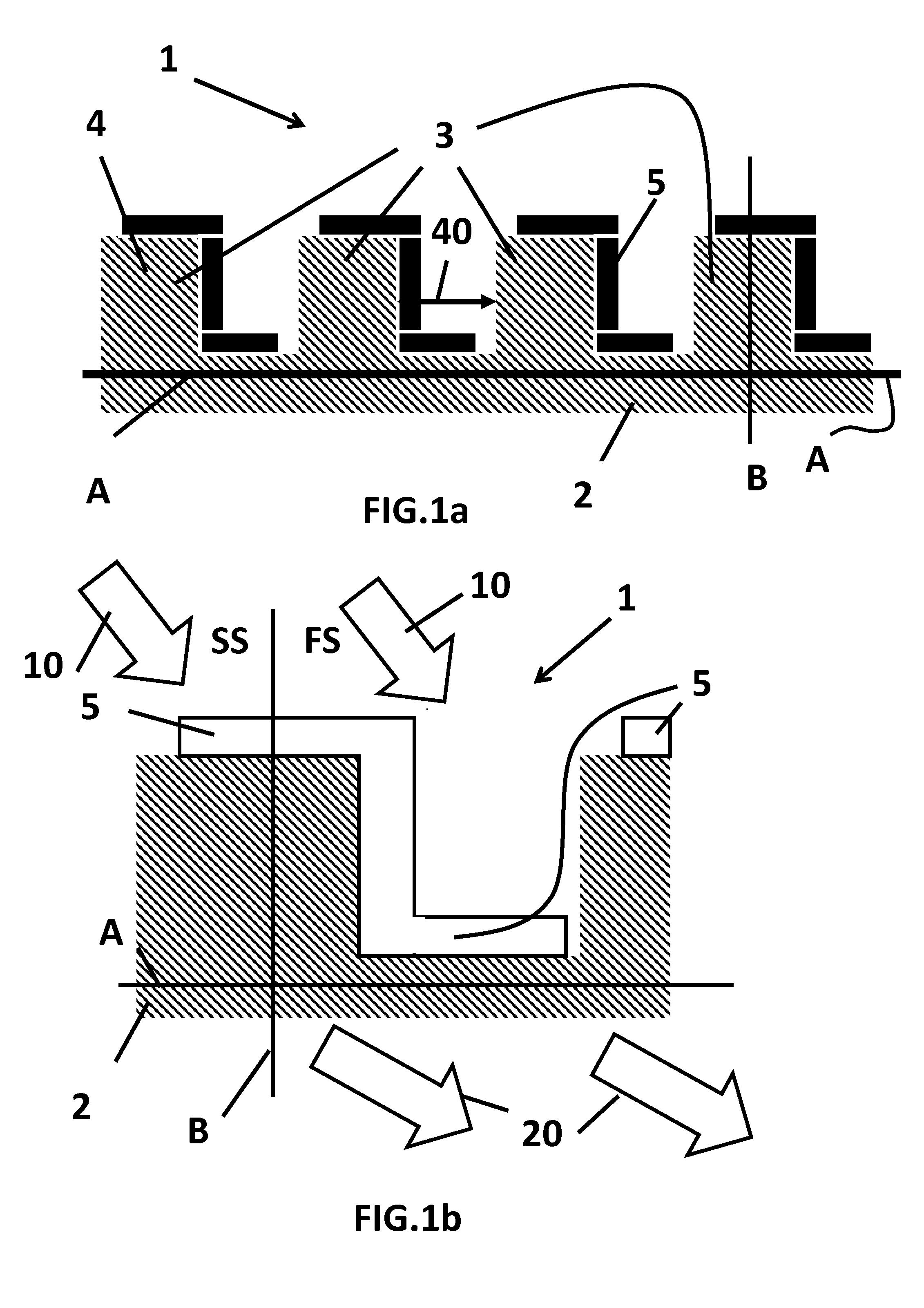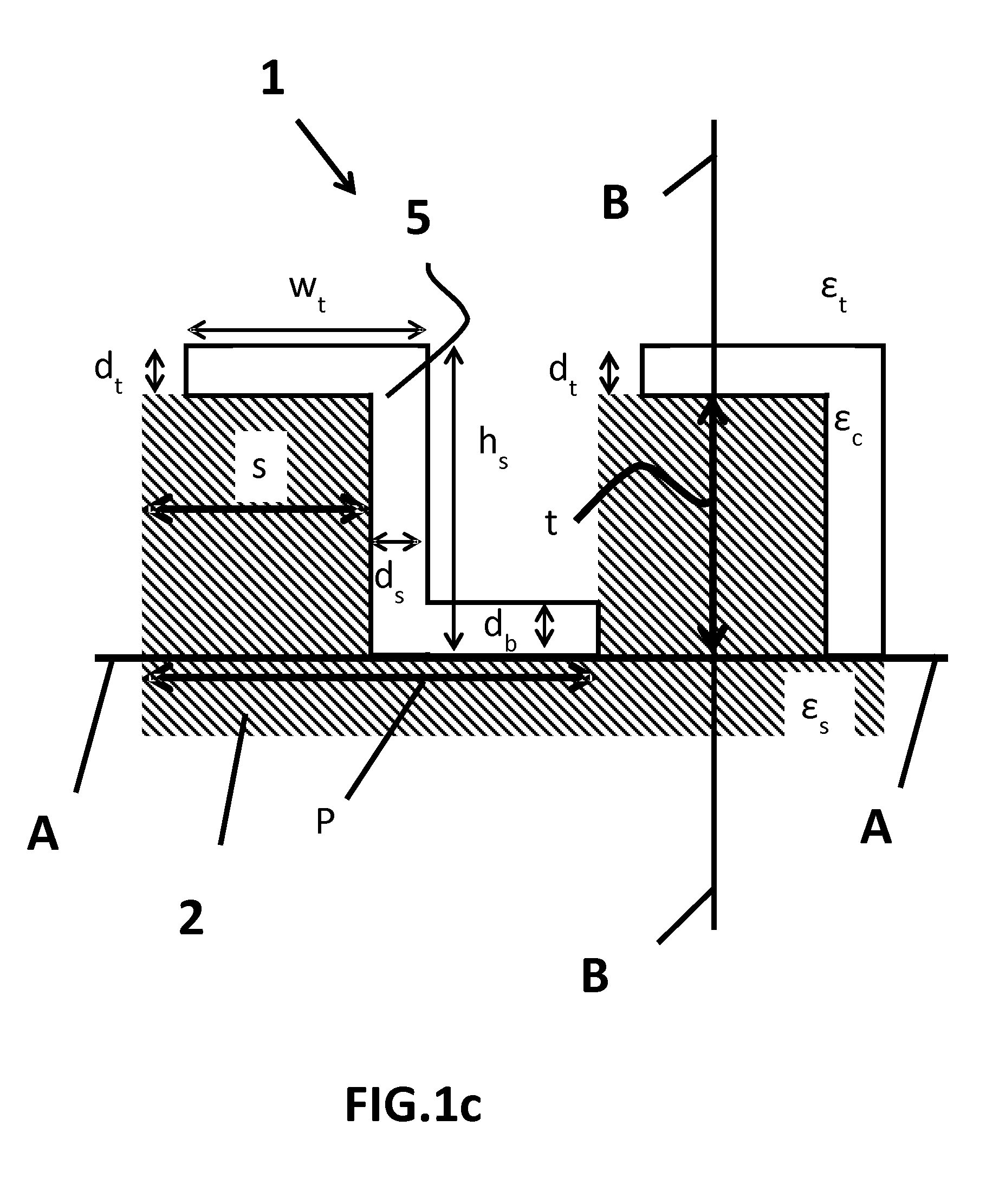Optical grating coupling structure
a technology of optical grating and coupling structure, which is applied in the field of optical grating coupling structure, can solve the problems of reducing the diffraction efficiency of the other wavelength, reducing contrast, and affecting the performance of optical gratings, and achieves a high efficiency dispersion effect and good efficient dispersion
- Summary
- Abstract
- Description
- Claims
- Application Information
AI Technical Summary
Benefits of technology
Problems solved by technology
Method used
Image
Examples
Embodiment Construction
[0113]The following detailed description illustrates the principles and examples of embodiments according to the invention. It will thus be appreciated that those skilled in the art will be able to devise various arrangements that, although not explicitly described or shown herein, embody the outlined principles of the invention and are included in its scope as defined in the claims. In the description and the figures, similar reference signs refer to the same or similar components or structural elements. Also, the wording “transparent” as used herein the description encompasses an average transparency of a light beam of at least 70%, in the wavelength range of interest. The wording “visible” as used herein means light between the near-UV to the near-infra-red, i.e. between 300 nm-2 μm as such wavelength can be converted easily to light visible for the human eye. Also, with the wording “waveguide” is meant an optical waveguide.
[0114]According to the invention it has been identified ...
PUM
 Login to View More
Login to View More Abstract
Description
Claims
Application Information
 Login to View More
Login to View More - R&D
- Intellectual Property
- Life Sciences
- Materials
- Tech Scout
- Unparalleled Data Quality
- Higher Quality Content
- 60% Fewer Hallucinations
Browse by: Latest US Patents, China's latest patents, Technical Efficacy Thesaurus, Application Domain, Technology Topic, Popular Technical Reports.
© 2025 PatSnap. All rights reserved.Legal|Privacy policy|Modern Slavery Act Transparency Statement|Sitemap|About US| Contact US: help@patsnap.com



